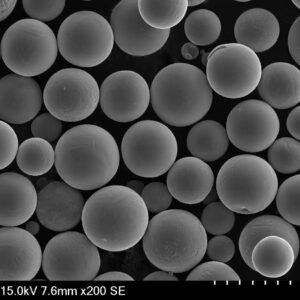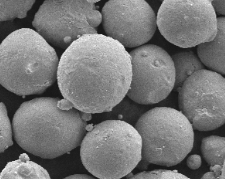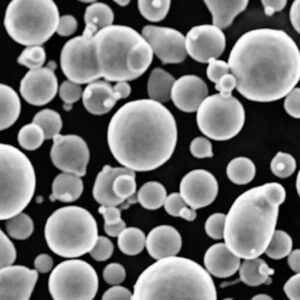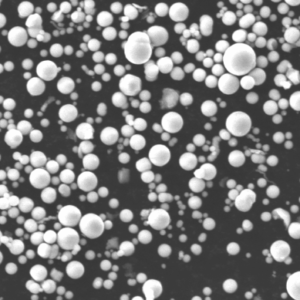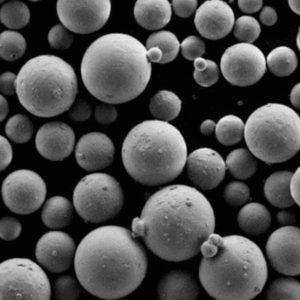파우더 개요 대형 인쇄
대형 인쇄는 고품질 이미지, 텍스트 및 디자인을 대규모로 제작할 수 있는 산업용 인쇄 분야의 판도를 바꾸고 있습니다. 하지만 대형 인쇄에 사용되는 파우더가 최종 제품의 품질, 내구성 및 효율성에 중요한 역할을 한다는 사실을 알고 계셨나요? 이 가이드에서는 대형 인쇄용 파우더의 종류, 구성 및 특성부터 적용 분야, 장점 및 한계에 이르기까지 모든 것을 다루는 대형 인쇄용 파우더의 세부 사항을 자세히 살펴봅니다.
엔지니어, 프린터 또는 대형 인쇄의 복잡성에 대해 궁금한 점이 있는 분이라면 이 글을 통해 올바른 파우더가 인쇄 프로젝트에 어떤 차이를 가져올 수 있는지 이해하는 데 필요한 모든 통찰력을 얻을 수 있습니다.
파우더의 종류 대형 인쇄
대형 인쇄에는 원하는 결과물에 따라 다양한 유형의 파우더가 사용됩니다. 가장 일반적으로 사용되는 파우더와 그 특성을 살펴보겠습니다.
| 파우더 유형 | 구성 | 속성 | 애플리케이션 | 장점 | 제한 사항 |
|---|---|---|---|---|---|
| 알루미늄 분말 | 알루미늄 입자 | 가볍고 튼튼한 내구성 | 항공우주 부품, 자동차 부품 | 높은 중량 대비 강도 비율 | 제대로 코팅하지 않으면 산화될 수 있습니다. |
| 구리 분말 | 구리 입자 | 전도성, 내식성 | 전기 부품, 열교환기 | 뛰어난 열 전도성 | 다른 금속에 비해 비싸다 |
| 스테인리스 스틸 파우더 | 철, 크롬, 니켈 | 부식 방지, 강력한 내구성 | 의료 기기, 식품 가공 장비 | 녹에 강한 높은 내구성 | 무겁고 비용이 많이 들 수 있음 |
| 티타늄 분말 | 티타늄 입자 | 고강도, 경량 | 의료용 임플란트, 항공우주 부품 | 생체 적합성, 견고함, 경량 | 높은 원자재 비용 |
| 니켈 분말 | 니켈 입자 | 강력한 내식성 | 터빈 블레이드, 배터리 | 뛰어난 기계적 특성 | 처리하기 어려울 수 있습니다. |
| 아연 분말 | 아연 입자 | 낮은 융점, 내구성 | 아연 도금, 배터리 | 부식 방지에 효과적 | 제한된 기계적 강도 |
| 철분 가루 | 철 입자 | 강력한 자성 특성 | 자동차 부품, 기계 부품 | 비용 효율적이고 쉽게 사용 가능 | 처리하지 않으면 녹이 발생하기 쉽습니다. |
| 청동 가루 | 구리, 주석 | 내구성, 부식 방지 | 조각품, 장식품 | 미적 매력, 강력한 | 구리 함량으로 인한 비용 증가 |
| 코발트-크롬 분말 | 코발트, 크롬 | 내마모성, 생체 적합성 | 치과 임플란트, 터빈 엔진 | 스트레스가 많은 애플리케이션에 탁월 | 비싸고 처리하기 어려운 데이터 |
| 마그네슘 파우더 | 마그네슘 입자 | 가볍고 튼튼한 | 자동차, 항공우주 애플리케이션 | 높은 중량 대비 강도 비율 | 분말 형태의 가연성 |
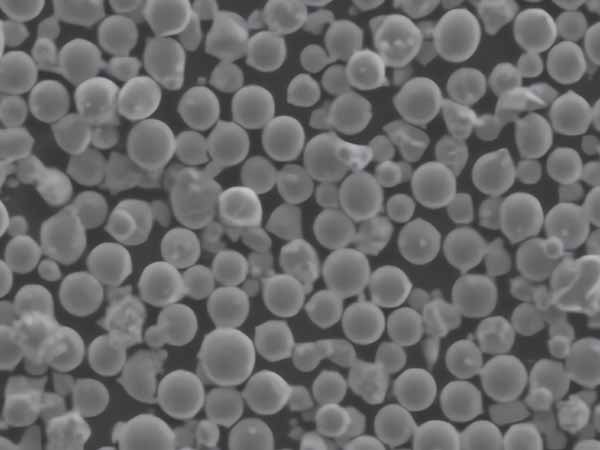
대형 인쇄용 파우더의 구성
대형 인쇄에 사용되는 파우더의 구성에 따라 다양한 용도에 대한 적합성이 결정됩니다. 각 파우더 유형은 필요한 기계적, 열적, 전기적 특성에 따라 선택되는 기본 금속 또는 합금으로 구성됩니다.
| 파우더 유형 | 기본 요소 | 합금 원소 | 구성 세부 정보 |
|---|---|---|---|
| 알루미늄 분말 | 알루미늄 | 실리콘, 구리, 마그네슘 | 강도, 전도성 또는 내식성을 향상시키기 위해 종종 합금화됩니다. |
| 구리 분말 | 구리 | 아연, 주석 | 다양한 기계적 특성을 위한 황동(구리-아연), 청동(구리-주석) |
| 스테인리스 스틸 파우더 | 철 | 크롬, 니켈, 몰리브덴 | 구체적인 등급은 304, 316 등 애플리케이션에 따라 다릅니다. |
| 티타늄 분말 | 티타늄 | 알루미늄, 바나듐 | 일반적인 합금은 고강도 및 경량으로 알려진 Ti-6Al-4V입니다. |
| 니켈 분말 | 니켈 | 크롬, 몰리브덴 | 인코넬과 같은 고성능 합금에 자주 사용됩니다. |
| 아연 분말 | 아연 | 알루미늄, 구리 | 아연 도금의 특성을 향상시키기 위해 소량의 합금 원소를 포함할 수 있습니다. |
| 철분 가루 | 철 | 탄소, 망간 | 저탄소 및 고탄소 품종 사용 가능, 때로는 합금 사용 가능 |
| 청동 가루 | 구리 | Tin | 주석의 비율은 경도와 내마모성에 영향을 미칩니다. |
| 코발트-크롬 분말 | 코발트 | 크롬, 텅스텐 | 코발트-크롬-텅스텐 합금은 내마모성과 생체 적합성이 뛰어납니다. |
| 마그네슘 파우더 | 마그네슘 | 알루미늄, 아연 | AZ31B는 강도와 성형성의 조합으로 널리 사용되는 합금입니다. |
대형 인쇄용 파우더의 특성
대형 인쇄에 사용되는 파우더의 특성을 이해하는 것은 작업에 적합한 재료를 선택하는 데 매우 중요합니다. 다음은 다양한 파우더의 성능을 정의하는 주요 특성입니다.
| 특성 | 설명 | 인쇄와의 관련성 |
|---|---|---|
| 입자 크기 | 개별 분말 입자의 크기를 나타냅니다. | 인쇄물의 부드러움과 해상도에 영향을 줍니다. |
| 유동성 | 파우더가 얼마나 쉽게 흐르고 퍼지는지 | 인쇄 시 균일한 배포를 위해 중요 |
| 구형성 | 파우더 입자의 원형도 | 구형도가 높을수록 유동성 및 포장 밀도 향상 |
| 순도 | 오염 물질 또는 원치 않는 요소의 부재 | 높은 순도로 일관되고 예측 가능한 인쇄 결과 보장 |
| 밀도 | 분말의 단위 부피당 질량 | 최종 인쇄된 오브젝트의 강도와 무게에 영향을 줍니다. |
| 수분 함량 | 분말에 함유된 수분의 양 | 뭉침을 방지하고 원활한 인쇄를 위해 수분 함량이 낮아야 합니다. |
| 산화 저항 | 공기 중 노출 시 산화에 대한 저항력 | 보관 및 인쇄 중 파우더의 무결성 유지에 중요 |
| 열 전도성 | 파우더가 열을 얼마나 잘 전도하는지 | 인쇄 중 냉각 및 응고 과정에 영향을 미칩니다. |
| 전기 전도성 | 전기 전도 능력 | 전기 연결이 필요한 애플리케이션에 중요 |
| 내식성 | 환경적 요인에 의한 부식에 대한 내구성 | 열악한 환경에서의 내구성을 위한 필수 요소 |
분말의 입자 크기 분포 대형 인쇄
파우더의 입자 크기 분포는 인쇄물의 최종 질감부터 디테일의 정밀도까지 모든 것에 영향을 미칩니다. 입자 크기 분포가 균일한 파우더는 인쇄물 전체에 걸쳐 일관된 품질을 보장합니다.
| 입자 크기 범위 | 일반적인 애플리케이션 | 장점 |
|---|---|---|
| <10 µm | 섬세한 디테일, 매끄러운 표면 | 고해상도, 더 나은 표면 마감 |
| 10-50 µm | 범용 인쇄 | 해상도와 유동성 사이의 균형 |
| 50-100 µm | 디테일이 적은 구조적 구성 요소 | 더 높은 증착률, 대형 부품에 적합 |
| >100 µm | 거친 텍스처, 대량 인쇄 | 더 빠른 인쇄, 노즐 막힘 감소 |
대형 인쇄용 파우더의 응용
대형 인쇄용 파우더는 다양한 산업에서 사용되며, 각 산업은 파우더의 특정 특성을 요구합니다. 다음은 주요 응용 분야입니다.
| 산업 | 애플리케이션 | 선호하는 파우더 유형 | 선호 이유 |
|---|---|---|---|
| 항공우주 | 제트 엔진 부품, 구조 부품 | 티타늄, 알루미늄 | 경량, 고강도 |
| 자동차 | 엔진 부품, 배기 부품 | 스테인리스 스틸, 알루미늄 | 부식 방지, 내구성 |
| 의료 | 임플란트, 보철 | 티타늄, 코발트-크롬 | 생체 적합성, 강력함 |
| 전자 제품 | 회로 기판, 커넥터 | 구리, 은 | 높은 전기 전도성 |
| 건설 | 건축 모델, 구조 부품 | 철, 강철 | 비용 효율적이고 강력한 |
| 에너지 | 터빈 블레이드, 배터리 부품 | 니켈, 코발트 | 고온 저항성, 내구성 |
| 예술 및 디자인 | 조각품, 장식 요소 | 브론즈, 스테인리스 스틸 | 미적 매력, 내구성 |
| 식품 가공 | 장비, 기구 | 스테인리스 스틸 | 비반응성, 부식 방지 |
| 해양 | 보트 부품, 수중 구조물 | 알루미늄, 스테인리스 스틸 | 내식성, 경량 |
| 방어 | 장갑차, 무기 부품 | 티타늄, 스틸 | 고강도, 내충격성 |
대형 인쇄용 분말의 사양, 크기, 등급 및 표준
대형 인쇄용 파우더를 선택할 때는 용도의 표준에 맞는 사양, 크기 및 등급을 고려하는 것이 중요합니다.
| 파우더 유형 | 크기 범위 | 공통 성적 | 관련 표준 |
| 알루미늄 분말 | 10-100 µm | 6061, 7075 | ASTM B928, AMS 4068 |
| 구리 분말 | 10-50 µm | C10100, C11000 | ASTM B170, ASTM B187 |
| 스테인리스 스틸 파우더 | 15-100 µm | 304L, 316L | ASTM A276, ASTM F138 |
| 티타늄 분말 | 15-50 µm | Ti-6Al-4V | ASTM F2924, AMS 4998 |
| 니켈 분말 | 20-80 µm | 인코넬 625, 718 | ASTM B443, AMS 5666 |
| 아연 분말 | 10-60 µm | Zn99.9, ZnCu | ASTM B846, ISO 14977 |
| 철분 가루 | 20-100 µm | Fe-C, Fe-Si | ASTM A848, ASTM B783 |
청동 가루 | 10-50 µm | CuSn10, CuSn12 | ASTM B427, EN 1982 |
| 코발트-크롬 분말 | 20-70 µm | CoCrMo | ASTM F75, ISO 5832-4 |
| 마그네슘 파우더 | 10-60 µm | AZ31B | ASTM B107, AMS 4377 |
대형 인쇄용 파우더 공급업체 및 가격
파우더 비용은 파우더의 종류, 품질, 공급업체에 따라 달라질 수 있습니다. 다음은 일반적인 공급업체와 가격 범위에 대한 개요입니다.
| 공급업체 | 파우더 유형 | 가격 범위(kg당) | 위치 | 주목할 만한 기능 |
|---|---|---|---|---|
| 회가나스 | 철, 스테인리스 스틸 | $15 – $50 | 스웨덴 | 고품질 금속 분말, 광범위한 합금 |
| 목수 첨가제 | 티타늄, 니켈 | $100 – $500 | 미국 | 고성능 파우더 전문 기업 |
| GKN 첨가제 | 알루미늄, 마그네슘 | $50 – $150 | 독일 | 항공우주용 경량 소재에 집중 |
| LPW 기술 | 알루미늄, 스테인리스 스틸 | $50 – $200 | UK | 파우더 품질 추적성 및 일관성 제공 |
| 샌드빅 | 코발트-크롬, 티타늄 | $150 – $600 | 스웨덴 | 고순도 특수 합금으로 유명합니다. |
| AMG 고급 야금 그룹 | 철, 구리 | $20 – $100 | 네덜란드 | 다양한 산업을 위한 다양한 파우더 제공 |
| 프렉스에어 표면 기술 | 니켈, 알루미늄 | $75 – $300 | 미국 | 광범위한 R&D를 통한 고품질 파우더 |
| 발리멧 | 알루미늄, 아연 | $25 – $120 | 미국 | 구형 분말에 집중하여 유동성 향상 |
| 케나메탈 | 텅스텐, 코발트-크롬 | $200 – $800 | 미국 | 단단한 소재와 내마모성 파우더로 유명합니다. |
| VDM 금속 | 니켈, 코발트 | $150 – $700 | 독일 | 고성능, 내식성 파우더 전문 기업 |
다양한 파우더의 장단점 비교하기 대형 인쇄
올바른 파우더를 선택하려면 각 유형의 장단점을 잘 따져봐야 합니다. 다음은 정보에 입각한 결정을 내리는 데 도움이 되는 비교표입니다.
| 파우더 유형 | 장점 | 단점 |
|---|---|---|
| 알루미늄 분말 | 가볍고 부식에 강한 | 산화되기 쉽고 융점이 낮습니다. |
| 구리 분말 | 우수한 전도성, 내식성 | 알루미늄보다 비싸고 무겁습니다. |
| 스테인리스 스틸 파우더 | 강력한 내식성 | 무겁고 작업하기 어려울 수 있음 |
| 티타늄 분말 | 높은 중량 대비 강도, 생체 적합성 | 매우 비싸고 복잡한 처리 요구 사항 |
| 니켈 분말 | 고온 내성, 강력한 | 처리하기 어렵고 비용이 많이 드는 |
| 아연 분말 | 비용 효율적이고 아연 도금에 적합 | 제한된 강도, 낮은 융점 |
| 철분 가루 | 비용 효율적이고 자기적인 특성 | 녹이 발생하기 쉬우며, 내구성을 위해 처리해야 함 |
| 청동 가루 | 미적 매력, 내구성 | 구리 함량으로 인한 비용 증가 |
| 코발트-크롬 분말 | 내마모성, 생체 적합성 | 비싸고 처리하기 어려운 데이터 |
| 마그네슘 파우더 | 매우 가볍고 튼튼한 | 분말 형태의 고인화성, 고가의 제품 |
대형 인쇄용 파우더의 장점
대형 인쇄에 파우더를 사용하면 여러 가지 장점이 있어 많은 업계에서 선호하는 선택입니다.
정확성과 디테일
파우더 기반 인쇄는 항공우주 부품 및 의료용 임플란트와 같은 애플리케이션에 매우 중요한 매우 미세한 디테일과 매끄러운 표면을 구현할 수 있습니다.
재료 효율성
파우더 인쇄는 사용하지 않은 파우더를 향후 인쇄에 재활용할 수 있으므로 폐기물을 줄일 수 있어 시간이 지남에 따라 비용 효율적인 솔루션이 됩니다.
사용자 지정
파우더 프린팅을 사용하면 다양한 파우더를 혼합하거나 프린팅 파라미터를 변경하여 재료 특성을 쉽게 조정할 수 있어 맞춤형 부품을 제작할 수 있습니다.
속도
특히 기존 공정에서 여러 단계를 거쳐야 하는 복잡한 부품의 경우 대형 파우더 프린팅이 기존 제조 방식보다 빠를 수 있습니다.
대형 인쇄용 파우더의 한계
대형 인쇄용 파우더는 많은 장점이 있지만 고려해야 할 몇 가지 제한 사항도 있습니다.
비용
특히 티타늄이나 코발트-크롬과 같은 희귀하거나 복잡한 합금으로 만든 고품질 파우더는 가격이 비싸서 고부가가치 애플리케이션에만 제한적으로 사용될 수 있습니다.
처리의 복잡성
대형 인쇄용 파우더를 취급하고 처리하려면 특수 장비와 전문 지식이 필요하므로 전체 생산 비용과 복잡성이 증가할 수 있습니다.
안전 문제
일부 분말, 특히 마그네슘이나 기타 반응성 금속으로 만든 분말은 제대로 취급하지 않으면 위험할 수 있으므로 엄격한 안전 프로토콜이 필요합니다.

파우더의 용도별 비교 대형 인쇄: 성능 및 애플리케이션
특정 요구 사항에 가장 적합한 파우더를 결정하는 데 도움이 되도록 성능과 용도를 비교해 보세요.
| 파우더 유형 | 힘 | 최상의 대상 | 적합하지 않은 대상 |
|---|---|---|---|
| 알루미늄 분말 | 높은 중량 대비 강도 | 항공우주, 자동차 부품 | 매우 높은 온도가 필요한 애플리케이션 |
| 구리 분말 | 뛰어난 전도성 | 전기 부품, 열교환기 | 무게에 민감한 애플리케이션 |
| 스테인리스 스틸 파우더 | 부식 방지, 강력한 내구성 | 의료 기기, 식품 가공 장비 | 경량 또는 초미세 디테일 애플리케이션 |
| 티타늄 분말 | 고강도, 경량 | 의료용 임플란트, 항공우주 부품 | 예산에 민감한 프로젝트 |
| 니켈 분말 | 강력한 내식성 | 터빈 블레이드, 고온 애플리케이션 | 경량 애플리케이션 |
| 아연 분말 | 낮은 융점 | 아연 도금, 배터리 | 고응력 또는 고온 애플리케이션 |
| 철분 가루 | 강력한 자성 특성 | 자동차 부품, 기계 부품 | 부식에 민감한 환경 |
| 청동 가루 | 내구성, 심미성 | 조각품, 장식품 | 비용에 민감한 애플리케이션 |
| 코발트-크롬 분말 | 내마모성, 생체 적합성 | 치과 임플란트, 터빈 엔진 | 경량 또는 저비용 애플리케이션 |
| 마그네슘 파우더 | 가볍고 튼튼한 | 자동차, 항공우주 애플리케이션 | 고온 애플리케이션 |
자주 묻는 질문
| 질문 | 답변 |
|---|---|
| 대형 인쇄에 가장 일반적으로 사용되는 파우더는 무엇입니까? | 알루미늄 분말 는 강도, 경량 특성 및 비용 효율성의 균형으로 인해 널리 사용됩니다. |
| 인쇄 과정에서 융합되지 않은 파우더를 재사용할 수 있나요? | 예, 사용하지 않은 파우더는 사용된 재료와 특정 공정에 따라 향후 인쇄에 재활용할 수 있습니다. |
| 파우더 기반 인쇄는 안전한가요? | 적절한 취급 및 안전 프로토콜을 준수하면 분말 기반 인쇄는 안전하지만 마그네슘과 같은 특정 분말은 위험을 초래할 수 있습니다. |
| 내 용도에 맞는 파우더는 어떻게 선택하나요? | 특정 애플리케이션에 필요한 강도, 무게, 내식성, 열적 특성 등의 요소를 고려하세요. |
| 대형 인쇄에 파우더를 사용하면 어떤 주요 이점이 있습니까? | 파우더 프린팅은 높은 정밀도, 재료 효율성, 맞춤화 및 생산 시간 단축을 가능하게 합니다. |
| 파우더를 혼합하여 커스텀 머티리얼을 만들 수 있나요? | 예, 고유한 용도에 맞는 특정 재료 특성을 얻기 위해 다양한 파우더를 혼합하는 것은 일반적인 관행입니다. |
| 입자 크기는 인쇄 품질에 어떤 영향을 미칩니까? | 입자 크기가 작을수록 세밀한 디테일과 매끄러운 표면을 구현할 수 있으며, 입자가 클수록 구조적 강도에 유리할 수 있습니다. |


